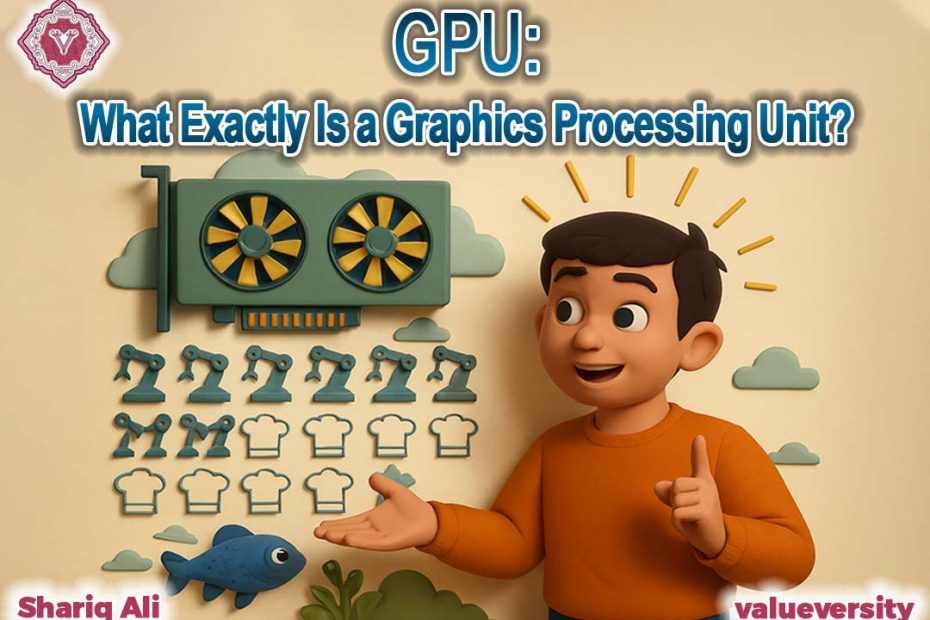GPU: What Exactly Is a Graphics Processing Unit?
✍️ Shariq Ali
Valueversity
🎯 For curious minds aged 8 to 80
Imagine you’re the head chef of a busy kitchen. If there’s only one cook who can prepare only one dish at a time, that would be just like how a computer’s CPU works — in a sequential manner.
Now picture a super chef entering your kitchen, with thousands of hands, capable of preparing hundreds of dishes all at once.
That’s what a GPU (Graphics Processing Unit) is!
🔍 What does a GPU do?
Originally, GPUs were designed for processing videos and images. But because they can handle thousands of tasks simultaneously (known as parallel processing), they are now revolutionizing artificial intelligence (AI) and machine learning.
🧠 When you’re teaching AI the difference between a cat and a dog — by showing it millions of images — you need a chip that can process thousands of data points at once.
That’s the real power of a GPU!
You could call it the super-processor of the digital brain.
⚡ Example:
When you ask ChatGPT a question, its neural networks must instantly select the right answer from thousands of possibilities.
That lightning-fast response? It’s thanks to the GPU.
🔬 Technical Difference:
CPUs have a few cores that work sequentially.
GPUs have thousands of small cores that work in parallel (massively parallel computing).
This is what makes GPUs essential for advanced AI tasks like deep learning, image recognition, data modeling, and natural language processing.
⚙️ Think of a GPU as being to artificial intelligence what robotic arms are to a modern car factory — powerful, synchronized, and highly efficient.
🎮 So next time you play a video game, edit a photo, or talk to an AI, remember this:
The GPU is silently powering a revolution behind the scenes.
